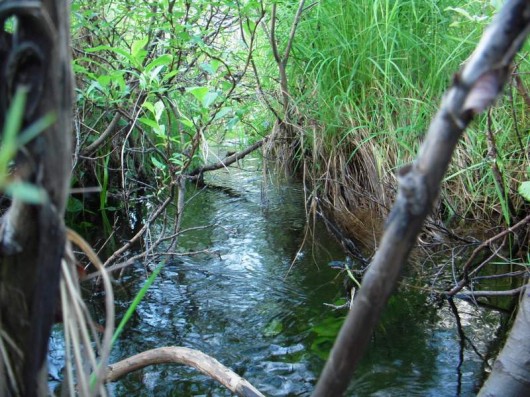In a few short hours we’ve converted our busy, messy, chaotic lab space into the clean, organized, lab it was when we arrived. This field season, while long, productive, and at times challenging has come to an end for the Polaris Project in Cherskiy in 2014. However, all across the U.S. (and here) are students and PIs combing through the volumes of data they collected this season.
There are many data stories to be told, but I will share a glimpse of mine as it has developed so far. I am an ecosystem ecologist: I try to understand how small scale things happen over entire landscapes. In this case, I want to know 1) how much CH4 and CO2 are released from and exported by the streams in this part of the arctic , 2) how the physical structure of different sections of stream affects these processes, and 3) how those rates of release and export change over the course of the ice-free season.

One of the study streams.
Studying small things at big scales presents unique challenges. Since I cannot (yet) sample every meter of stream in the entirety of the Arctic, I must randomly choose sections of stream to act as representatives and extrapolate carefully. There are of course uncertainties in this, but as some famous ecologist once said “all models are abstractions, and some can even be useful”.
Analyzing samples, quality control, and the many steps of analysis will take quite some time to complete, but I know a few things already that I can share. These streams are saturated with CH4 and CO2 relative to the atmosphere, they flow downhill (nothing groundbreaking there), and much like your favorite carbonated beverage, if you disturb (shake) a liquid that is saturated with a gas, then the gas will leave the liquid. The real unknown is the magnitude of how much gas is released and how that may change over time.
Streams make up only a few percent of the total surface area of a watershed, but as we have seen with lakes in ponds in Siberia, small parts of the landscape can have disproportionate impacts. Streams have been largely ignored for this and other reasons, so these data will be our first glimpse of how they affect the release of CH4 and CO2 in a Siberian watershed.
Now we just need to get home…



